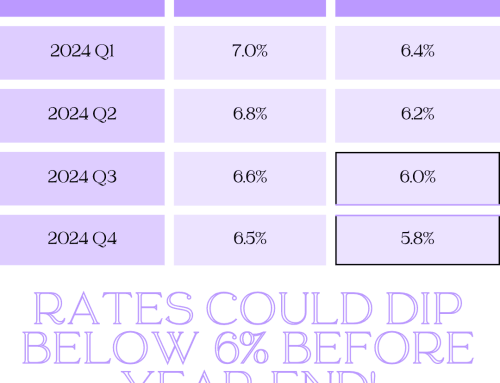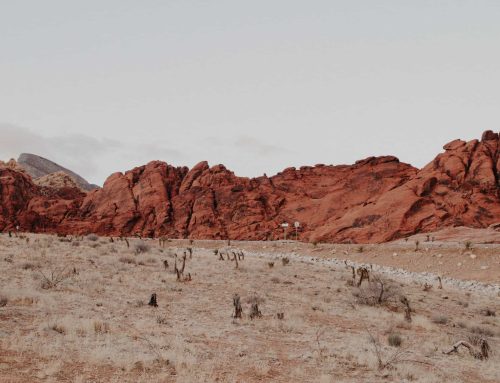Lake Mead Rises
Amazing news for Lake Mead! According to recent estimates from the U.S. Bureau of Reclamation, Lake Mead is projected to experience a 33-foot increase in its water level this year. This rise can be attributed to the higher-than-anticipated snowpack levels in the Upper Colorado River Basin. The melting of this snow will contribute to an increased flow of water into the Colorado River. Leading to significant adjustments in the government’s plans for water storage in both Lake Powell and Lake Mead.
Snowpack peaks at 160% of normal as Colorado River water flows toward Lake Mead.
The government has unveiled revised plans that involve a substantial increase in the volume of water to be released from Lake Powell this year. The initial proposal to release 7 million acre-feet of water has been adjusted to 9.5 million acre-feet, representing a difference of over 800 billion gallons of water by the year’s end. To put one good year in perspective, the Bureau of Reclamation said Lake Powell and Lake Mead — the two biggest reservoirs in the country would go from 23% full to 26% full.
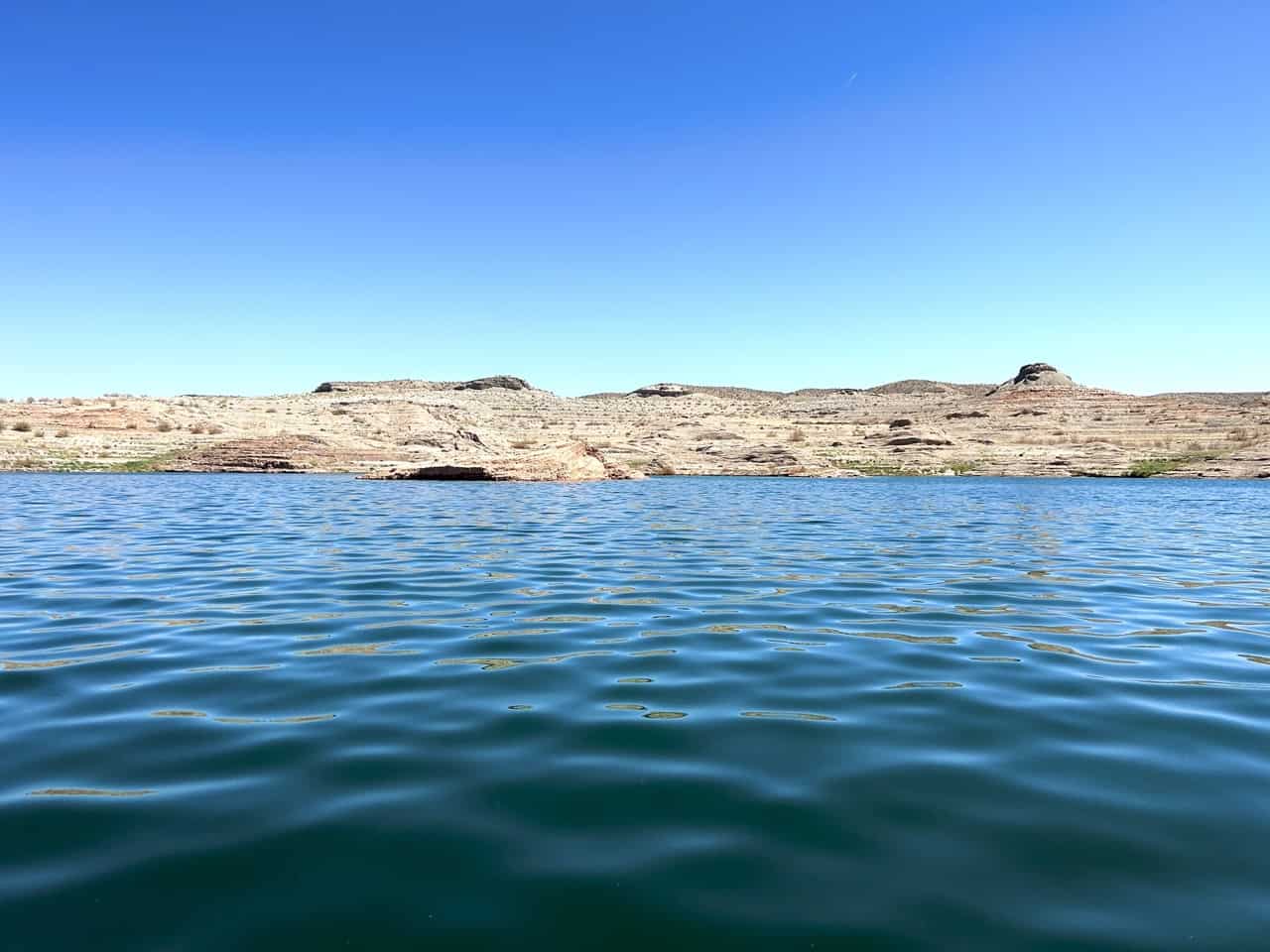
In addition, the Bureau of Reclamation has disclosed its intention to implement a “high-flow release” later this month. During this water will be discharged from Glen Canyon Dam at a rate of 35,900 cubic feet per second. This deliberate release aims to transport sediment accumulated in the river, facilitating the formation and enhancement of beaches. Such an outcome will have a positive impact on the conditions at Grand Canyon National Park and assist in the management of invasive species within the Colorado River.
“Despite this year’s welcomed snow, the Colorado River system remains at risk from the ongoing impacts of the climate crisis. We will continue to pursue a collaborative, consensus-based approach to conserve water, increase the efficiency of water use, and protect the system’s reservoirs from falling to critically low elevations that would threaten water deliveries and power production.” -Reclamation Commissioner Camille Calimlim Touton
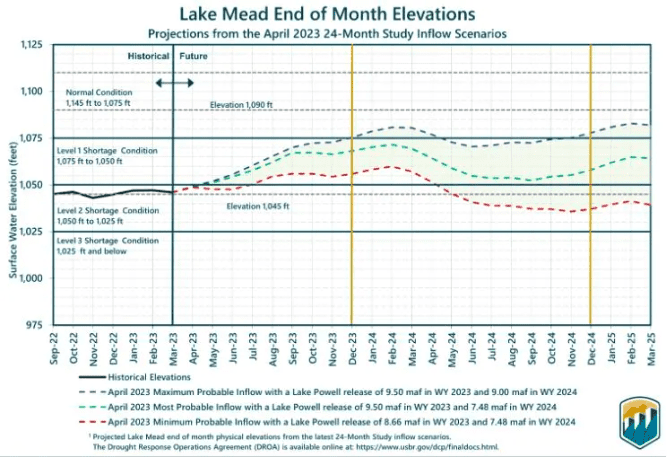
This year, Lake Mead is projected to experience a rise of 33 feet, reaching an anticipated level of 1,068.05 feet. Concurrently, Lake Powell is expected to increase by 40 feet, reaching a level of 3,576.50 feet. This rise in Lake Powell’s water level will enable the retention of an additional 2.74 million acre-feet of water resulting from the increased runoff.
The Colorado River Compact, governs the allocation of water rights among the states along the river’s course from the Colorado Rockies to the Gulf of Mexico. While Nevada’s water allocation from the river is relatively modest, drought conditions have led to reductions in water allocations. Resulting in the federal government officially declaring a water shortage. *Information found on 8newsnow.com
Lake Powell
Outdoor enthusiasts in the valley have received encouraging news regarding the water supply. The water levels in Lake Powell, which feeds into Lake Mead, are steadily rising at a rate of approximately one foot per day. The Bureau of Reclamation expects Lake Powell to rise 70 feet this year. *Information found on news3lv.com
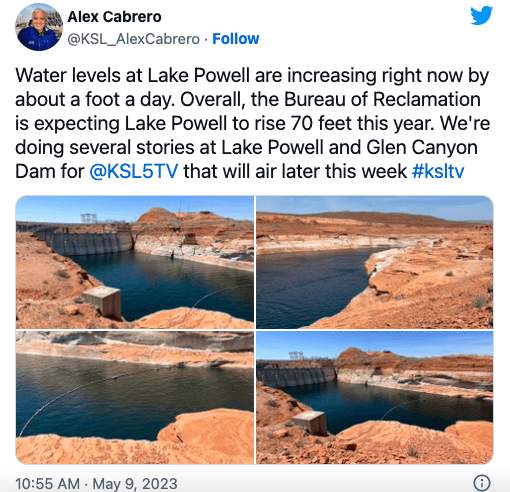

Lake Mead water levels are expected to rise to 1060 ft. by July 2023!
Federal Authorities Initiate Public Procedure to Revamp Critical Regulations on Utilization of Colorado River Water by 2027
The U.S. Interior Department has initiated a public process to reshape the distribution of Colorado River water, aiming to update and implement new rules by 2027. This process seeks input from the public on crucial aspects such as hydropower, drinking water, and irrigation, benefiting farms, cities, tribes, and even Mexico, across seven Western U.S. states, including Utah. Expired guidelines, including agreements made in 2007 to address water scarcity caused by drought and climate change, as well as operational plans for Lake Powell and Lake Mead reservoirs, are targeted for replacement.

The 1,450-mile river is a vital power and water supplier for more than 40 million people in cities. Agriculture uses the most water, including farms in the Imperial Valley area of California and Yuma County in Arizona that produce many of the nation’s winter vegetables. Going forward, across the Basin, these new sets of guidelines for Lake Mead and Lake Powell will be developed based on the best available science. *Information found on stgeorgeutah.com
“The Bureau of Reclamation is committed to ensuring we have the tools and strategies in place to help guide the next era of the Colorado River Basin, especially in the face of continued drought conditions.” -Bureau Commissioner Camille Calimlim Touton
The water level at Lake Mead is projected to surge by nearly 20 feet from its January levels by the conclusion of this year. According to the latest forecast from the Bureau of Reclamation, the additional releases from Lake Powell to Lake Mead are anticipated to elevate the water level by an additional six feet.
The expected water level at Lake Mead by the end of the year is 1,065 feet, marking a notable rise compared to the 1,047 feet it was at in January. As per the Bureau of Reclamation data as of June 2023, the lake’s water level stood at 1,056 feet. *Information found on ktnv.com
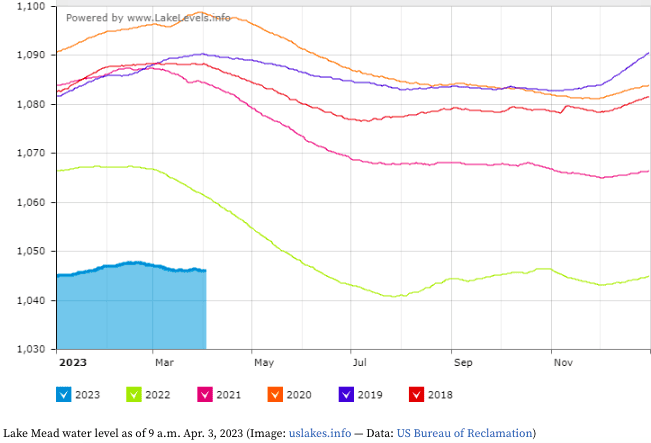
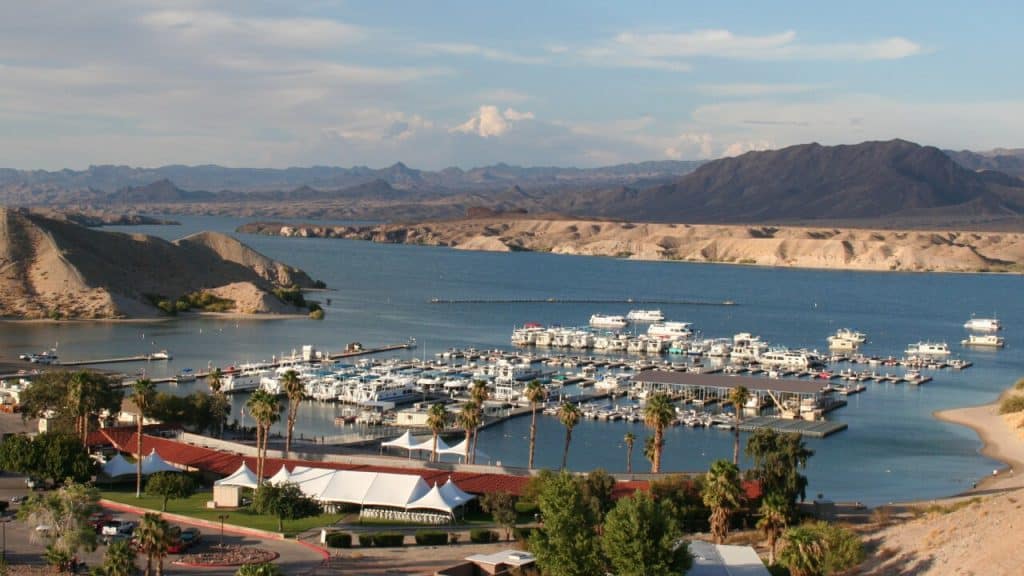
lakemohave
Photo by: Lake Mohave Adventures
Lake Mead Upcoming Upgrades:
Lake Mead Mohave Adventures revealed that they’ve entered into a fresh 25-year lease, ensuring the ongoing operation of Cottonwood Cove Resort & Marina. The lease contains a redevelopment initiative, incorporating $10 million in enhancements to current facilities and the introduction of new amenities. The marina expansion blueprint entails installing 46 additional covered slips and adding covers to 74 existing slips. A 400-foot “courtesy dock” is set to be positioned along the south end of the North Beach Swimming area, offering a designated, secure space for boats.
“This transformation is a testament to our passion for creating best-in-class experiences for our guests and premier employment opportunities for our dedicated team members.” – Chad Taylor, Director of Marketing & Guest Experience
More Plans Include:
– Complete renovation of the 24-room motel.
– Transformation of the café into the lake’s exclusive pub offering pub-style food and a full bar; accompanied by a redesigned store featuring a covered outdoor patio for al fresco dining.
– Introduction of an electric vehicle charging station and the conversion of Cottonwood Cove’s vehicles to electric golf carts, utility vehicles, ATVs, and electric tricycles.
– RV park enhancements for increased space, featuring Dark Sky Project-compliant, energy-efficient lighting, and water-efficient fixtures.
– Establishment of 250 storage spots, including 50 covered spots.
– Upgrades and expansions to employee housing facilities.
– Installation of 20 rental cabanas at the new Ski Cove private beach area.
– Modifications to the lower campground, including the conversion of some sites to “eco-tent” sites and adaptive campsites.
– Introduction of a tricycle transportation service and food and beverage delivery for the RV park, Ski Cove cabanas, and the lower campground.
– Addition of an ADA-compliant fishing dock and Mobi-mat at the fishing pier for enhanced accessibility.
– Placement of portable toilets and trash receptacles at North Beach.



